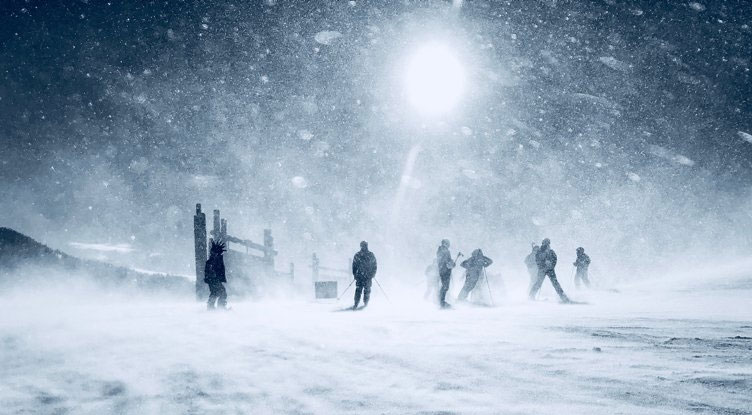Unique device produces electricity from ... snowfall
Recently, scientists have developed a unique device that generates energy from the phenomenon of natural snowfall.
Based on the principles of friction electrostatic effect (the effect in which the charge is generated after the two materials come into contact with each other), researchers' new technology products utilize snow particles. bring positive charge to produce electricity .
Chemist Maher El-Kady from the University of California, Los Angeles (UCLA) and technology director of research firm Nanotech Energy explains: " Because the snow has been positively charged, we think why not try it. Find another material with opposite charge and separate the current to collect the energy? "

This product utilizes positively charged snow particles to produce electricity.
According to ScienceAlert , although no one has ever previously exploited snow to capture electricity, many researchers have conducted similar activities from other materials.
The team's device is a snow-powered electric nanogenerator - a material based on frictional electric effects and electrostatic induction to capture energy.
In recent years, scientists have built many types of friction electric nanogenerators, or TENG (triboelectric nanogenerator) that produce electricity from raindrops, physical movement, tire friction and even lice are even moving on the floor.
All of the above methods - including TENG snow-powered equipment - have the same principle of operation even though the methods are slightly different depending on the type of movement and the material being exploited. .
UCLA chemist and material scientist Richard Kaner said: " Static electricity occurs due to the contact between the electron-collecting material and the electrons that give up the electron. After that, you separate the charge and naturally create the source. electricity . "
With TENG running on snow, after designing the device and applying 3D printing to create electrodes, scientists measured electricity output with a few different friction-carrying materials acting as functional layers. and not all matter helps produce the same amount of electricity.
El-Kady revealed: " While snow tends to abandon electrons, the efficiency of the device depends on the effectiveness of other materials when conducting these charges.
After testing a large amount of matter including aluminum foil and Teflon plastic, we found that silicone produces more charge than any other material . "
With silicon placed as the friction electric layer of the device, the charge can be generated by a number of different contact mechanisms, including snow falling directly or sliding on the silicon layer.
In other tests, the team also examined the silicon exposed to the snow while attaching the silicon layer to the bicycle wheel and under the hiking shoe sole.

The silicon layer is attached even below the hiking shoe soles.
Although the amount of electricity generated in experiments is not large, researchers promise snow-powered TENG capable of being integrated into future solar batteries, helping batteries generate electricity during snow When the effect from the sun is reduced or not feasible.
With an Earth surface area of about 46 million square kilometers exposed to snow every year, we have a great opportunity to scale up technology to the production of wrist-mounted energy receivers, or bring TENG into snow. Biometric tracking sensor on a day not far away.
Researchers say it is likely that in the near future, snow-powered TENG could be used in self-powered remote weather stations installed in snowy areas, from which technology can measure snow speed and depth of snow with other meteorological functions such as reading wind direction and wind speed.
- The cause of the record snowfall in Japan
- Magnificent Paris with a record snowfall in three decades
- The dance floor produces electricity
- Successfully fabricated the device to turn water into electricity
- Venice's love city produces electricity from algae
- Snowfall causes traffic disturbance in Japan
- Spain produces electricity from cyclones
- Power plant in backpack
- Bicycle brakes generate electricity
- Air purifier for water
- The device converts radio waves into electricity
- Italy produces electricity with giant kites
 The US company is about to build a supersonic passenger plane of 6,000km / h
The US company is about to build a supersonic passenger plane of 6,000km / h Japan develops avatar robot as in fiction film
Japan develops avatar robot as in fiction film Australia tested the world's first mango picking robot
Australia tested the world's first mango picking robot America develops technology to separate water from animal waste
America develops technology to separate water from animal waste